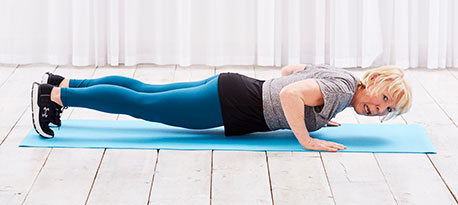Nice pic isn’t it?. That’s Bude, Cornwall about a month ago. Right, onto our topic.
If you’re between the ages of 40 and 70 and you’re either approaching, knee-deep in or out the other side of the menopause, then strength-training will help you not just survive it but embrace it. Muscle is our friend and ally. If we use it, it brings the body much benefit. If we let it go slack, then it will work against us.
Strength training (also called resistance training) is the process of using your muscles to work against a resistant force provided either by your own bodyweight or by bands, dumb-bells and barbells. Placing a demand on muscles means they’ll adapt and become stronger and firmer. During the menopause, hormones weave a whirlwind through our bodies and the effect of lowering oestrogen levels is not only felt in our menstrual cycle, our rising anxiety, insomnia and lack of confidence, but in our muscles. They become slacker and therefore weaker. If we have weak muscles, we have unstable joints. The fluctuation of these hormones also robs our bones of their strength. On top of that…. (yes, there’s more joy)….you may have noticed your weight creeping up. Well, it’s all connected. Muscle which has been used or rather ‘trained’ will be more metabolically active. That means that trained, toned muscle requires more energy (calories) to keep it in that toned state at rest.
Say Susan and Amanda are both 55. Susan hates exercise and can just about walk to the bus-stop. Amanda exercises four times a week – a mix of circuits, weights and power-walking. Amanda’s body will burn more calories for her sitting watching ‘Strictly’ on TV than Susan’s will because her muscles are regularly used and challenged and, therefore, her metabolic rate is higher. Her body is a calorie-burning furnace. Susan’s would barely light a match. So, fire yourselves up, girls. Start squatting today!
Annie
x
(Originally written for Woman magazine November 2023)




